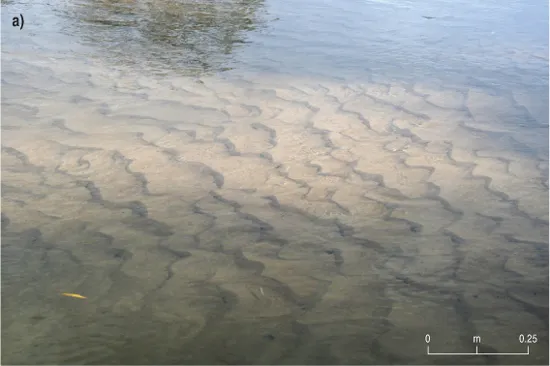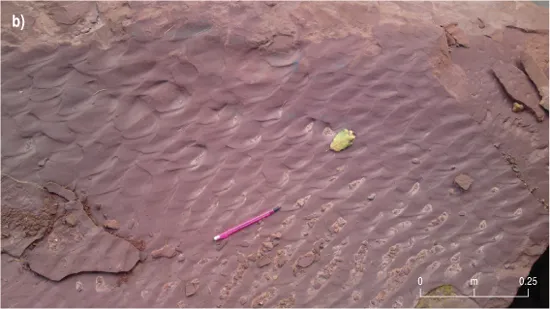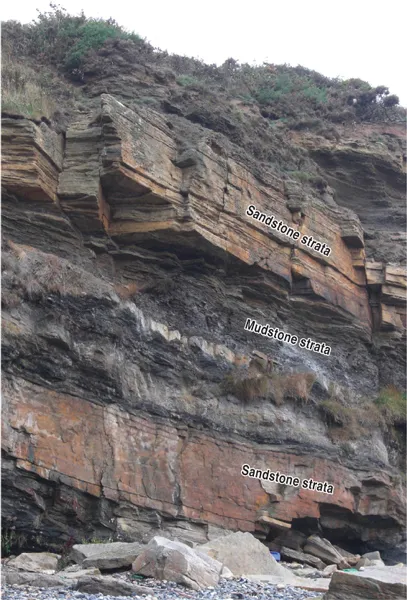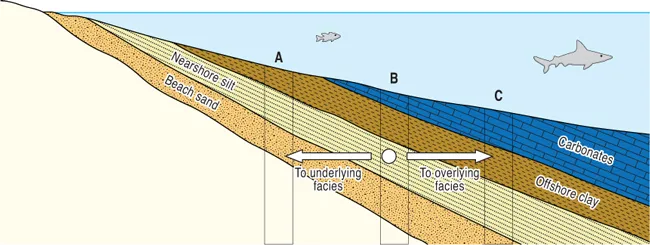![]()
1 What is sedimentology?
In this book sedimentology is introduced, a branch of geology concerned with the nature and origin of sediments. It includes the weathering of rocks to produce sediment, their dispersal and deposition in different environments from terrestrial to the deepest parts of the oceans. The sediments are transformed through time by chemical, physical and biological processes to form sedimentary rocks.
The term ‘sedimentology’ has only been widely used for the last few decades to better encompass the improved understanding of the processes that create sediments and the dynamic environments where sediments accumulate. In many ways, sedimentary rocks advocate the Uniformitarian principle the present is the key to the past better than anything else in geology, and sedimentary rocks have much to tell us about their history, and in turn the history of the earth. Since some 70% of the rocks on the Earth’s surface are sedimentary in origin, and sediments are of great economic importance, there is a very good chance that we encounter a sedimentary rock or an associated sedimentary process at some point in our daily lives.
Sedimentologists strive to understand the Earth’s history from studies of sedimentary rocks through fieldwork, field observations, laboratory and theoretical studies. Sediments and sedimentary rocks yield important information about palaeoclimatology and palaeogeography, and contain the record of life on Earth, preserved as fossils. The fossils provide the basis for stratigraphy as a direct relationship between rocks and time. Sedimentologists need to cross many different disciplines and sub-disciplines of geology and ocean sciences to fully understand and appreciate the sedimentary rock record.
Figure 1.1 Sediment consisting of A) well sorted and rounded grains and, B) poorly sorted with subrounded to subangular grains. The degree of sorting may also indicate the energy, rate, and/or duration of deposition, as well as the transport process (river, debris flow, wind, glacier, etc.) responsible for laying down the sediment. Sorting of sediments can also be affected by reworking of the material after deposition.
From grain to basin
All sedimentary rocks are composed of sediment that is varied in its origin, composition, shape, and size of grains. Solid particles or grains may be sourced from the erosion of other rocks, precipitated directly from solution by chemical processes, and include whole or broken shells created by once living organisms. This sediment provides a wealth of information about the way in which the material was carried and deposited. To create any package of sediment, transportation of grains by water, air, ice and/or gravity is required. Biological growth or chemical precipitation of sediments can also take place in situ. Transport and processes operating where sediment accumulates result in sorting (Fig. 1.1). Sediments are characterized as poorly sorted when the grains are of differing sizes, and well sorted when grains are about the same size. During the transportation of sediment, abrasion of grains can readily occur, where sharp corners and edges are worn smooth, a process known as rounding (Fig. 1.1). Rounding of sediment grains can indicate the distance and time involved in the transportation of the sediment from the source area to where it accumulates. The speed of rounding depends on hardness and composition of grains. For example, a soft mudstone pebble will obviously round much faster, and over a shorter distance of transportation, than a harder, more resistant sandstone pebble. The rate of rounding is also affected by the grain size and energy conditions.
The transportation of sediment grains, the action by gravity, and the effects of biological and chemical changes in the deposited sediment are all factors that control the architecture of the resulting sedimentary deposits. Any of these processes can lead to the formation of sedimentary structures, which are the visible signs of the various processes as preserved in the rock record. It is the job of the sedimentologist to interpret the sedimentary structures, and because particular processes are characteristic of different environments of deposition, the study of the sedimentary structures makes it possible to reconstruct environments of deposition and past palaeogeography.
Figure 1.2 Modern and ancient ripples. A) Modern ripples, North Norfolk, UK; B) Ancient ripples from Triassic sandstones near Annan, Dumfries and Galloway, Scotland, UK.
Sedimentary environments
Understanding modern environments of deposition allows sedimentologists to understand the environments in which ancient sedimentary rocks were deposited and thereby help us recreate past conditions on the Earth. You may well have stood on a beach when the tide has gone out and admired the ripples that have been preserved in the sand. These ripples can then be used to identify that the sedimentary environment was a shallow marine beach setting, and this is especially important for ancient sedimentary settings (Fig. 1.2). Sediment that was eroded and transported will eventually be laid down layer by layer in a depositional environment, and over geological time will create the stratigraphic rock record.
Deposition of sediment may take place in many different environmental settings, and with most weathering and erosion taking place in continental mountainous regions, climate, topography, tectonic activity and local geology all control the amount, type and rate of sediment that is dispersed. Sedimentologists generally subdivide the depositional settings into three major depositional settings: continental (on the land), shoreline (beaches and deltas) and open marine, each with distinctive sediment characteristics that are used to compare with the geological (stratigraphic) rock record.
The Facies concept
The Swiss geologist and palaeontologist Amanz Gressly (1814–65) first introduced the term ‘facies’ in 1838 with his work on the Jura Mountains of central Europe. He discovered that individual layers or strata change their characteristics laterally: they are not uniform along their entire extent and undergo a facies change. A facies is a distinctive packet of sedimentary rock with specific sedimentary features that distinguish it from other facies (Fig. 1.3). Different facies are recognized based on sediment type (e.g. sandstone, limestone, coal), grain size, colour, texture, sedimentary structures and fossils. Sedimentary facies are the primary building blocks of all sedimentological studies. They provide the means of recording data, describing sediment and successions, and for making interpretations about the depositional processes.
Figure 1.3 Sedimentary facies of repeating sandstone and mudstone from Carboniferous deltaic sediments, Howick, Northumberland, UK.
Generally, facies are distinguished by sedimentologists based on what aspect of the rock or sediment is to be studied. Thus, facies based on sediment characteristics such as grain size and mineralogy are called lithofacies. Lithofacies are used to interpret, correlate, and map sedimentary rocks. Facies based on fossil content are called biofacies. Particular facies may together form a characteristic facies association or may succeed one another to form a distinctive facies sequence.
Walther’s Law of Facies, or simply Walther’s Law, named after the geologist Johannes Walther, states that the vertical succession of facies reflects lateral changes in environment. Conversely, it states that when a depositional environment ‘migrates’ laterally, sediments of one depositional environment come to lie on top of another (Fig. 1.4). A classic example of this law is the vertical stratigraphic succession that typifies marine transgressions (sea-level rise) and regressions (sea-level fall). Facies analysis is an important tool in the reconstruction of ancient environments of deposition and palaeogeography (see chapter 4). It has also proved invaluable in the prediction and exploitation of economic deposits.
Figure 1.4 The principle of Walther’s Law. The vertical sequence of sedimentary facies mirrors the original lateral distribution of sedimentary environments.
La...





